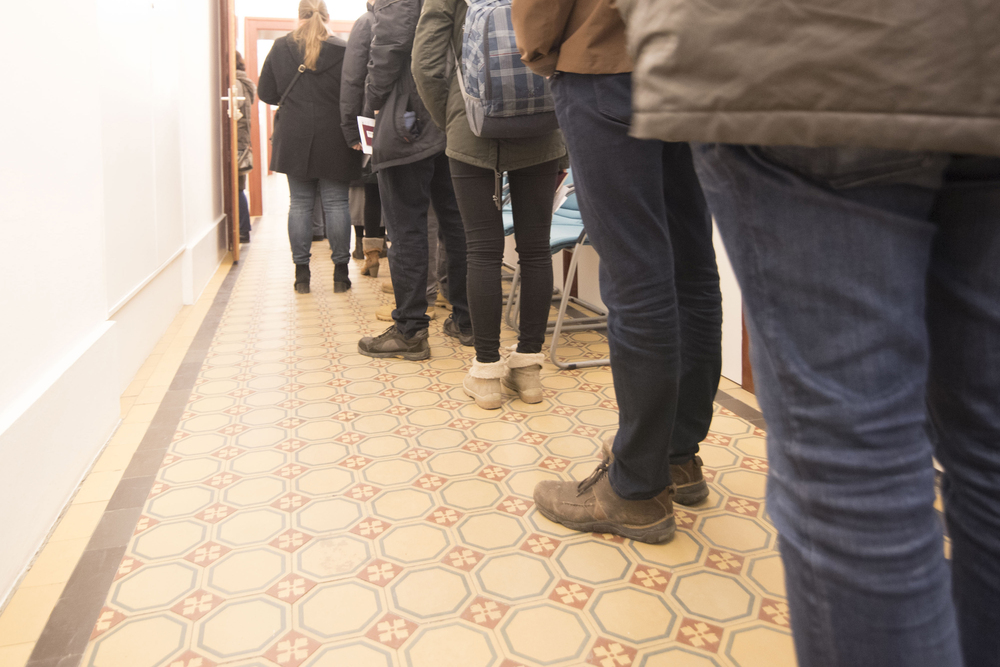Amsterdam farmer demonstrates drone agriculture for lieutenant governor

- by maurya18@gmail.com
- March 14, 2024

- COMING IN HOT — Fred Kungl, center, landed his DJI Agras T30 drone during a demonstration of drone agricultural use for Ohio Lt. Gov. Jon Husted, left, and Ohio Department of Agriculture Director Brian Baldridge. — Christopher Dacanay
- DEMONSTRATION — Fred Kungl, center, worked the controls of his DJI Agras T30 drone during a demonstration of drone agricultural use for Ohio Department of Agriculture Director Brian Baldridge, left, and Ohio Lt. Gov. Jon Husted. — Christopher Dacanay

DEMONSTRATION — Fred Kungl, center, worked the controls of his DJI Agras T30 drone during a demonstration of drone agricultural use for Ohio Department of Agriculture Director Brian Baldridge, left, and Ohio Lt. Gov. Jon Husted. — Christopher Dacanay
AMSTERDAM — Ohio’s lieutenant governor and the director of the Ohio Department of Agriculture witnessed a Carroll County farmer demonstrate a drone’s use in agriculture, which he said can save farmers money while promoting good soil quality.
Fred Kungl, founder of FK Agronomics and CEO of J&G Cattle Co. LLC, showed off his DJI Agras T30 drone to Lt. Gov. Jon Husted and ODA Director Brian Baldridge Wednesday at J&G’s 275-acre Amsterdam farm. Using a remote control, Kungl directed the drone over a pre-programmed flight path, over which it scattered medium red clover seeds on top of already growing wheat.
The clover, Kungl said, acts as a cover crop, growing underneath the main crop simultaneously, anchoring soil to prevent erosion and providing essential nutrients for the soil to function well, particularly nitrogen. Furthermore, once harvested, the clover provides extra protein in J&G’s feed, which goes toward its cattle that are sold direct to consumers through a United States Department of Agriculture processing facility.
Whereas cover crops would typically be planted using large, wheeled farming implements, drones allow seeds to be planted without having to compact the soil and at a much faster rate, Kungl said. If done early enough, the broadcasting results in more nutrients for soil and a better yield for farmers.
A soil consulting and application business, FK Agronomics currently utilizes three drones, including two newer models, that can be rented for use at other farms, where Kungl’s staff run the drones to do broadcasting work or spray pesticides and fungicides. The newer model drones are capable of carrying up to 10 gallons of liquid contents and 112 pounds of dry contents.

COMING IN HOT — Fred Kungl, center, landed his DJI Agras T30 drone during a demonstration of drone agricultural use for Ohio Lt. Gov. Jon Husted, left, and Ohio Department of Agriculture Director Brian Baldridge. — Christopher Dacanay
Husted said this smart farming technology can reap benefits for Ohio farmers by solving agricultural problems and enhancing opportunities.
“This is new, so we’re learning about this. … I think that, through the things that we’re seeing happening in Carroll County and other places around the state of Ohio, that (technology) will just help build a stronger, more enlightened approach to agriculture in Ohio.”
Present for the demonstration were Jefferson County Commissioner Eric Timmons and officials with Jefferson Soil and Water Conservation District.
JSWCD projects manager Aaron Dodds said this type of agricultural drone technology would be particularly beneficial in Jefferson County, where hilly topography and limited acreage impedes aerial seeding — already a more expensive process — and rainy weather can sometimes prevent the use of large farming implements due to residual mud.
“The new technology is a great opportunity because it limits the amount of impact on the soil with compaction and erosion issues, and with the drone being airborne, it’s creating a lot more effective spread and getting the areas where traditional farming implements are unable to go.
“We’re fortunate because (Kungl’s) base of operations is here on the Carroll-Jefferson line. We have a few entities in Jefferson County that do similar work. We can start implementing this on the very rugged terrain that is Jefferson County.”
FK Agronomics’ drone business cover most of the state of Ohio, operating over about 10,000 acres yearly, Kungl said.
There are risks associated with the drones for farmers, Kungl noted during his demonstration. Drone technology progresses quickly — his T30 model is already multiple generations behind now — and parts can’t be retrofitted while still adhering to Federal Aviation Administration regulations. What’s more, individuals need time to secure a drone pilot’s license.
Kungl said getting into business with one drone can cost at least $100,000 for the equipment, but enough demand exists that the drones can provide another revenue stream for their owners once running. It would take as much as 3,000 acres for a drone operator to break even, Kungl said, adding that it benefits the owner and the farmers who the drone helps.
Speaking on that benefit for farmers, Baldridge said after the demonstration: “One of our challenges in agriculture is the increase in cost of equipment and out inputs, but we have this kind of technology that … can provide a service to (one’s) neighbor — at a cost — (so) the neighbor doesn’t have to purchase this himself.”
Kungle noted cover crops’ ability to limit nutrient leaking out from soil via water runoff, adding that using drones will have a resulting effect on the quality of that outflowing water.
Baldridge mentioned the expansion of H2Ohio, the state’s water quality improvement plan, saying, “We’re looking forward to working with our local soil and water folks here in Carroll and Jefferson, and then our local farmers can take advantage of those best management practices for water quality in Eastern Ohio.”
The Latest News
-
November 22, 2024BAM Infra en Rijkswaterstaat ronden onderhoud A10 Noord en Zeeburgerbrug af Duurzame koploper in wegverharding – Kijk op Noord-Holland
-
November 21, 2024ADIDAS OPENT VANDAAG NIEUWE WINKEL IN DE WESTFIELD MALL OF THE NETHERLANDS – vastgoednieuws.nl
-
November 21, 2024Aanvoerder Koen Bloemen van het Nederlands rugbyteam verzorgt training voor CSE-rugbytalenten
-
November 21, 2024Ook Arnoud van Ravensberg weg bij Unilin Flooring Nederland
-
November 21, 2024Heroes Dutch Comic Con neemt gamebeurs GameForce over – Entertainment Business






